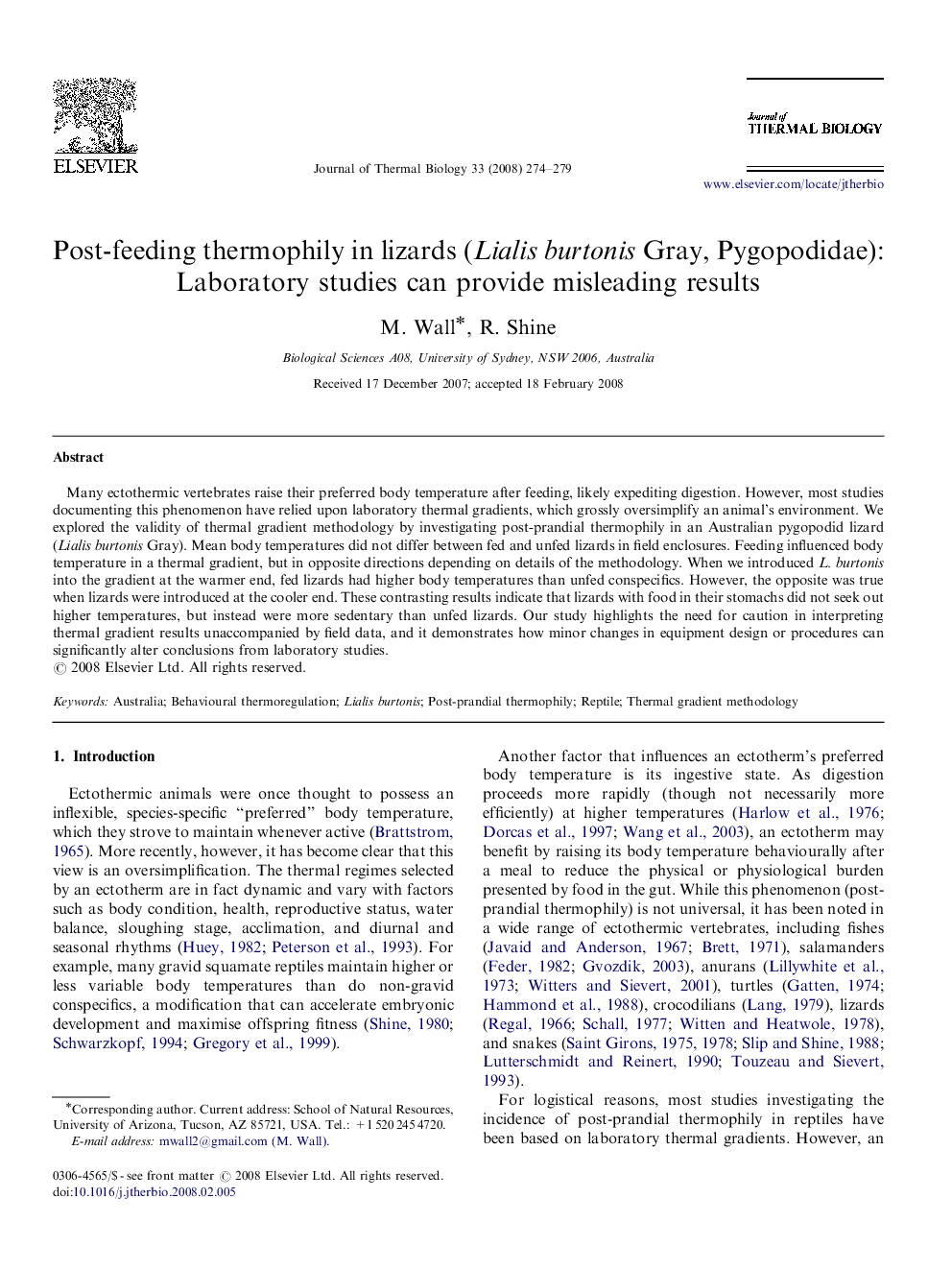| Article ID | Journal | Published Year | Pages | File Type |
|---|---|---|---|---|
| 2843704 | Journal of Thermal Biology | 2008 | 6 Pages |
Many ectothermic vertebrates raise their preferred body temperature after feeding, likely expediting digestion. However, most studies documenting this phenomenon have relied upon laboratory thermal gradients, which grossly oversimplify an animal's environment. We explored the validity of thermal gradient methodology by investigating post-prandial thermophily in an Australian pygopodid lizard (Lialis burtonis Gray). Mean body temperatures did not differ between fed and unfed lizards in field enclosures. Feeding influenced body temperature in a thermal gradient, but in opposite directions depending on details of the methodology. When we introduced L. burtonis into the gradient at the warmer end, fed lizards had higher body temperatures than unfed conspecifics. However, the opposite was true when lizards were introduced at the cooler end. These contrasting results indicate that lizards with food in their stomachs did not seek out higher temperatures, but instead were more sedentary than unfed lizards. Our study highlights the need for caution in interpreting thermal gradient results unaccompanied by field data, and it demonstrates how minor changes in equipment design or procedures can significantly alter conclusions from laboratory studies.
